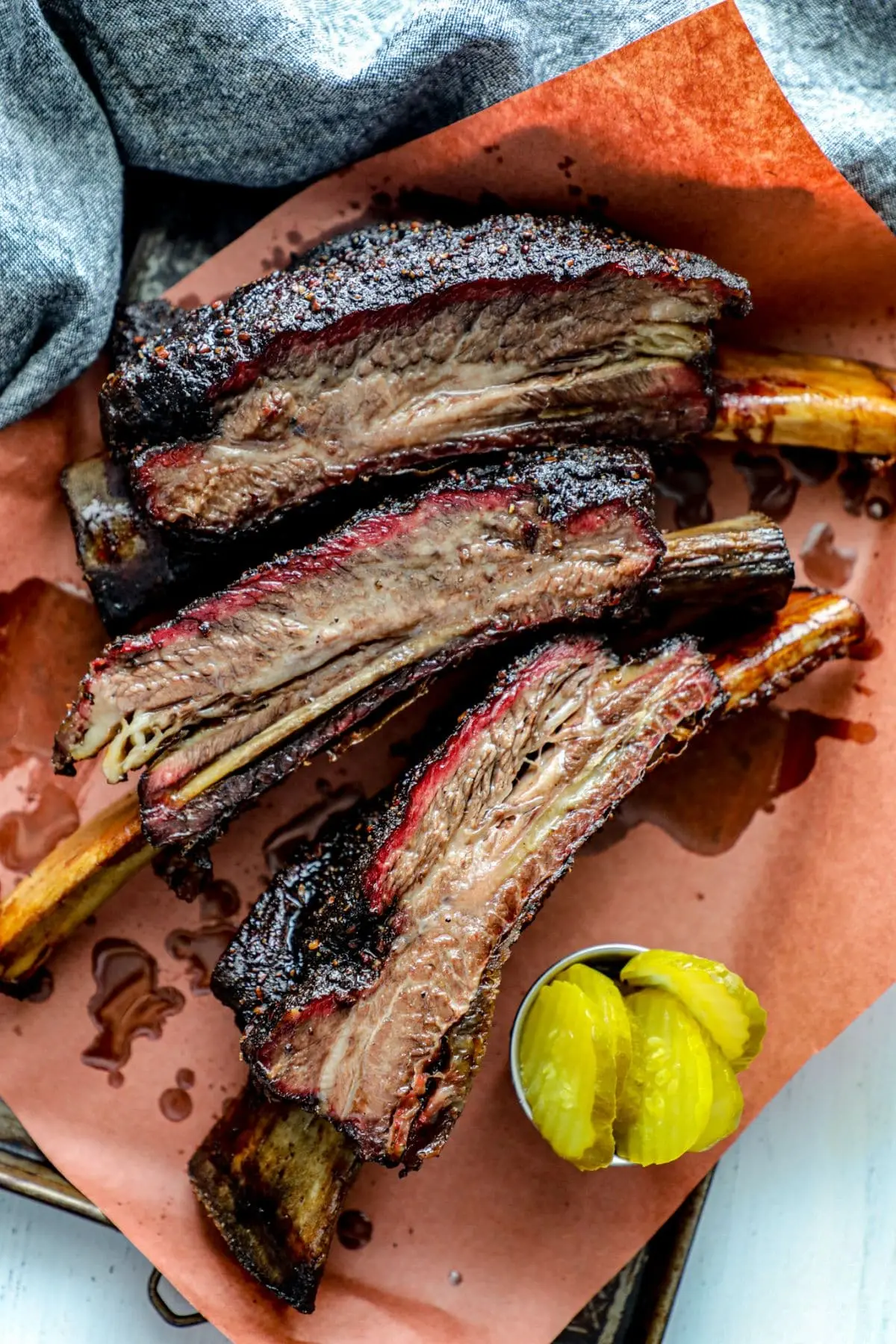Smoking beef ribs is a mouthwatering experience that many barbecue enthusiasts love. The key to achieving tender and flavorful beef ribs lies in the temperature at which they are smoked. There is a debate among pitmasters about whether it is best to smoke beef ribs at 225 or 250 degrees Fahrenheit. In this article, we will explore the differences and benefits of each temperature and help you decide which one is right for you.
Smoking at 225 Degrees Fahrenheit
Smoking beef ribs at 225 degrees Fahrenheit is a popular choice among barbecue aficionados. This lower temperature allows the meat to cook slowly, resulting in tender and juicy ribs. The low and slow cooking method allows the connective tissues in the meat to break down slowly, resulting in a melt-in-your-mouth texture.
At 225 degrees Fahrenheit, it can take around 6 to 8 hours to smoke beef ribs to perfection. This longer cooking time allows the flavors from the smoke to penetrate deep into the meat, creating a rich and smoky taste. The end result is ribs that are tender, flavorful, and fall-off-the-bone delicious.
Smoking at 250 Degrees Fahrenheit
On the other hand, smoking beef ribs at 250 degrees Fahrenheit is a slightly higher temperature that can result in a different texture and flavor profile. The higher heat can help to render the fat more quickly, resulting in a slightly crisper exterior. This can add a pleasant contrast to the tender meat inside.
Smoking beef ribs at 250 degrees Fahrenheit can also reduce the overall cooking time. It typically takes around 4 to 6 hours to smoke ribs at this temperature. The shorter cooking time can be beneficial if you are looking for a quicker meal or have time constraints.
Choosing the Right Temperature
Ultimately, the choice between smoking beef ribs at 225 or 250 degrees Fahrenheit comes down to personal preference. Both temperatures can yield delicious results, but they offer slightly different textures and flavors.
If you prefer ribs that are incredibly tender and have a melt-in-your-mouth texture, smoking at 225 degrees Fahrenheit is the way to go. The slower cooking process allows the ribs to develop a rich smoky flavor and become incredibly tender.
On the other hand, if you enjoy a slightly crisper exterior and want a quicker cooking time, smoking at 250 degrees Fahrenheit can be a great option. The higher heat can help render the fat more quickly and create a contrast between the crispy exterior and the tender meat inside.
- Q: Can I smoke beef ribs at a higher temperature?
- Q: How can I ensure that my beef ribs are cooked to the right temperature?
- Q: Can I use a gas or electric smoker for smoking beef ribs?
A: While smoking beef ribs at higher temperatures is possible, it is generally recommended to stick to the range of 225 to 250 degrees Fahrenheit to achieve the best results.

A: The best way to ensure that your beef ribs are cooked to the right temperature is by using a meat thermometer. The internal temperature should reach around 203 degrees Fahrenheit for perfectly cooked beef ribs.
A: Yes, you can use a gas or electric smoker for smoking beef ribs. The key is to maintain a consistent temperature throughout the cooking process.
Summary
When it comes to smoking beef ribs, the choice between 225 or 250 degrees Fahrenheit is a matter of personal preference. Smoking at 225 degrees Fahrenheit results in incredibly tender and flavorful ribs, while smoking at 250 degrees Fahrenheit can provide a slightly crisper exterior and a quicker cooking time. Whichever temperature you choose, be sure to use a meat thermometer to ensure that your beef ribs are cooked to perfection. Happy smoking!
If you want to know other articles similar to Smoked beef ribs: temperature guide & tips you can visit the Barbecue category.


Related Articles